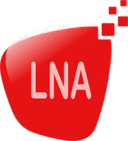When the hunt for clicks compromises media ethics
By Akmal Nadzmi Azlan, Dr. Mohd Istajib Mokhtar

Have you ever clicked on a headline that promised to “reveal the shocking truth” only to find a bland, underwhelming article? That’s the bait—and you just got hooked. Welcome to the world of clickbait.
In today’s digital media landscape, attention is everything. With millions of stories competing for eyeballs every second, publishers often resort to flashy, misleading, or emotionally charged headlines to stand out. While these tactics might bring short-term traffic spikes, they raise serious ethical concerns and contribute to a growing mistrust of the media.
Clickbait is a strategy designed to do one thing: make you click. It often takes the form of over-the-top headlines, dramatic thumbnail images, or cryptic social media captions that prey on your curiosity. These hooks are engineered to be irresistible—tapping into human impulses like the fear of missing out (FOMO), outrage, or suspense.
Experts in media psychology have noted that these tactics rely on what’s called a “curiosity gap”—the space between what the headline teases and what the story actually reveals. By deliberately withholding key information, content creators make readers feel compelled to click just to satisfy that curiosity. In many cases, the payoff is disappointing. And the more that happens, the more readers become sceptical—not just of the outlet, but of journalism itself.
The modern internet runs on attention. Every click, view, and share can be converted into ad revenue. As social media platforms use algorithms that promote high-engagement content, the incentive for news outlets is clear: be the loudest, most provocative voice in the room—even if it comes at the cost of accuracy.
Digital media researcher Fahim Rahman pointed out in 2023 that media companies are under constant pressure to generate revenue, and “engagement metrics have quietly replaced editorial integrity.” He argued that when journalism is reduced to a numbers game, sensationalism often wins.
Another reason clickbait thrives is that many of us no longer read full articles. We scroll through headlines on social media, letting those few words shape our understanding of complex events. In this environment, a misleading headline can have more influence than a well-researched article buried beneath it.
Clickbait isn’t just annoying—it’s dangerous. Studies have shown that people who repeatedly engage with clickbait headlines are more likely to distrust the media. A 2022 survey found that even when readers know a headline is exaggerated, repeated exposure leads to a general scepticism toward all news.
This effect becomes especially troubling during times of crisis. Take the COVID-19 pandemic, for example. Viral headlines about “miracle cures” or “what doctors don’t want you to know” spread like wildfire. Many of these claims were not only misleading—they were harmful. People changed their health behaviours based on content designed to generate clicks, not deliver facts.
What’s worse is that even when the article itself is accurate, a misleading headline can leave a lasting impression. Readers may not retain the nuanced truth—they remember the emotional pull of the exaggerated claim. Over time, this distorts public understanding and contributes to the spread of misinformation.
In 2016, Facebook took a public stand against clickbait after facing backlash over its role in spreading sensational and misleading content during the U.S. presidential election. The tech giant rolled out an algorithm tweak that demoted posts with headlines like “You’ll Never Believe What Happened Next!” or “This Simple Trick Changed Everything!”
Adam Mosseri, then head of Facebook’s News Feed team, explained that the platform had developed a system to detect commonly used clickbait phrases and reduce their visibility in users’ feeds. The move was a step in the right direction—at least on paper.
But the strategy had its limits. Publishers quickly found ways around the filters by tweaking their wording just enough to avoid detection. This arms race between content creators and algorithm designers revealed a deeper truth: technical fixes alone won’t solve a cultural problem.
The ethical dilemma
At its core, clickbait raises tough ethical questions. Is it acceptable to mislead people—even a little—if it means drawing attention to an important issue? Some would argue yes, especially under a utilitarian view where the outcome justifies the means.
But many ethicists strongly disagree. They point out that journalism is not just about what’s effective—it’s about what’s right. The moment media organisations compromise on honesty, they breach the fundamental trust that holds the public and the press together.
Communication ethics also stresses the importance of respecting the audience. Misleading headlines manipulate readers rather than inform them. As consumers become more aware of this manipulation, media outlets face a choice: regain trust through transparency, or risk losing credibility altogether.
So how do we fix the clickbait problem?
It starts with better newsroom practices. Editors and journalists need to apply the same standards to headlines as they do to body text. That means no exaggerations, no half-truths, and no emotional manipulation for the sake of traffic.
Technology can help, too. Some publishers are experimenting with AI tools to analyse headlines for sensationalism before articles go live. Others are adding trust indicators—like estimated reading time or content previews—to set clearer expectations for readers.
But the responsibility isn’t just on the creators. As consumers, we need stronger digital literacy. Schools, universities, and public education campaigns should teach people how to evaluate online content, spot manipulative tactics, and think critically about what they read and share.
Rahman suggests that lasting change will require a combined effort: platforms enforcing consistent policies, publishers upholding ethical standards, and readers staying informed and sceptical. “Clickbait thrives in ignorance,” he notes. “Education is our best defence.”
Clickbait may seem like a harmless marketing trick—but it reflects a deeper conflict between profit and principle in the digital age. While the race for clicks can boost numbers on a dashboard, it chips away at something far more valuable: public trust.
In the end, every headline is a promise. When that promise is broken—again and again—the damage isn’t just to one article or one outlet. It’s to journalism itself.
So the next time you see a headline that screams for your attention, take a moment to ask: is this worth the click? And more importantly, is it worth the compromise?


The authors are from the Department of Science and Technology Studies, Faculty of Science, Universiti Malaya
